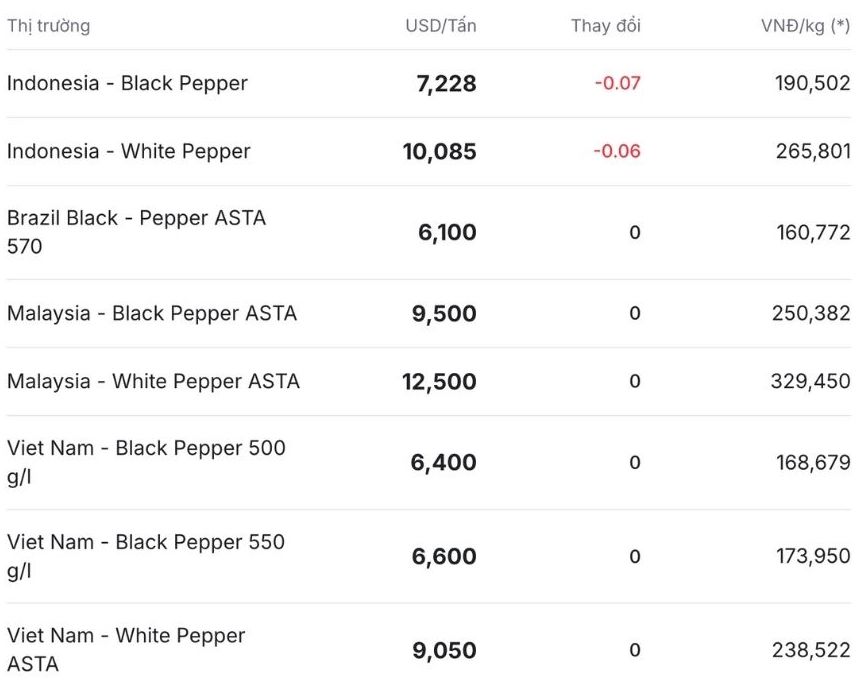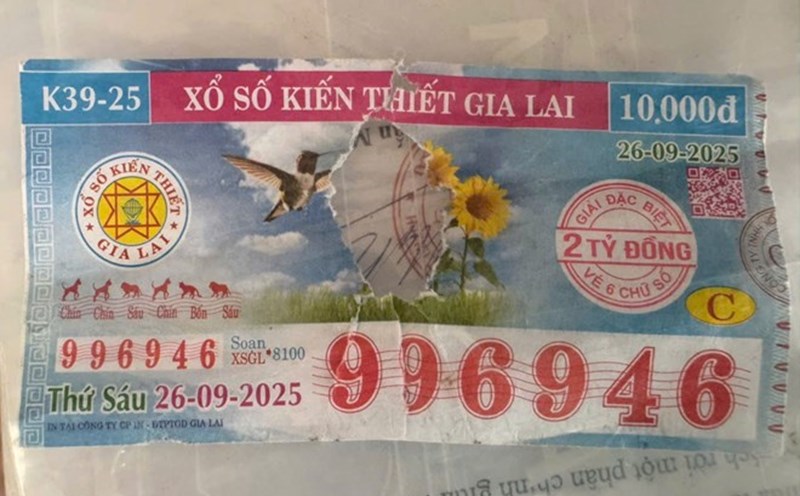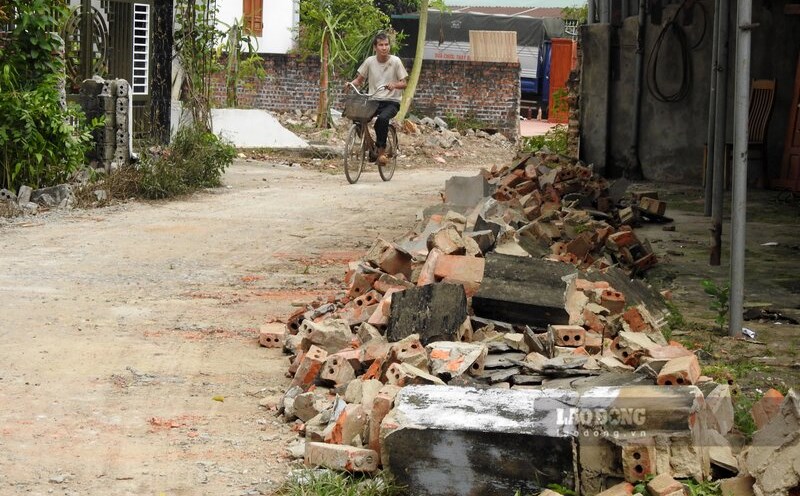Domestic pepper prices: Increase again
As of 12:30 today (October 20), the domestic pepper market has increased prices in some areas, averaging 145,400 VND/kg. Currently, the price ranges from 144,000 - 146,000 VND/kg.
Some areas maintained stable prices compared to the previous session, except for provinces such as Ho Chi Minh City and Dong Nai, which increased by 500 VND/kg.
Gia Lai province today listed 144,000 VND/kg. This is the lowest price in the region.
Ho Chi Minh City and Dong Nai are trading at 145,500 VND/kg.
Lam Dong and Dak Lak set the price at 146,000 VND/kg.
World pepper prices: Indonesia maintains a decrease
In the world market, pepper prices are mostly stable at the end of the week. In particular, the Indonesian exchange - one of the most vibrant markets - continued to fall. Currently, these two items are traded between 7,228 - 10,085 USD/ton (equivalent to 190,502 VND/kg - 265,801 VND/kg).
On the other hand, the Brazilian market, after a deep price drop of 1.64%, is currently at 6,100 USD/ton (about 160,772 VND/kg). In the same direction, black and white pepper were stable, trading at 12,500 USD/ton and 9,500 USD/ton, respectively.
In the pepper export market of Vietnam, the price of black pepper of 500 g/l and 550 g/l is flat, anchored at 6,400 - 6,600 USD/ton. ASTA white pepper prices remain high, currently standing at 9,050 USD/ton (equivalent to 238,522 VND/kg).

Assessment and forecast
According to data from the European Statistical Office (Eurostat), in the first 8 months of the year, the European Union (EU) imported 89,036 tons of pepper from non-BSP markets, worth 617.9 million EUR.
Compared to the same period last year, import volume decreased slightly by 1.1%, but the value increased sharply by 42.6%, reflecting the increasing pepper price trend in the international market.
Vietnam continues to be the largest non-boundary pepper supplier to the EU, accounting for 64% of total imports, equivalent to 56,989 tons, down 4.5% over the same period last year. Second place is Brazil with 14,726 tons, accounting for 16.5% and up 5.1%, followed by Indonesia with 6,484 tons, accounting for 7.3% and up 10.7%; India reached 4,124 tons, accounting for 4.6% and down 9.8%.











